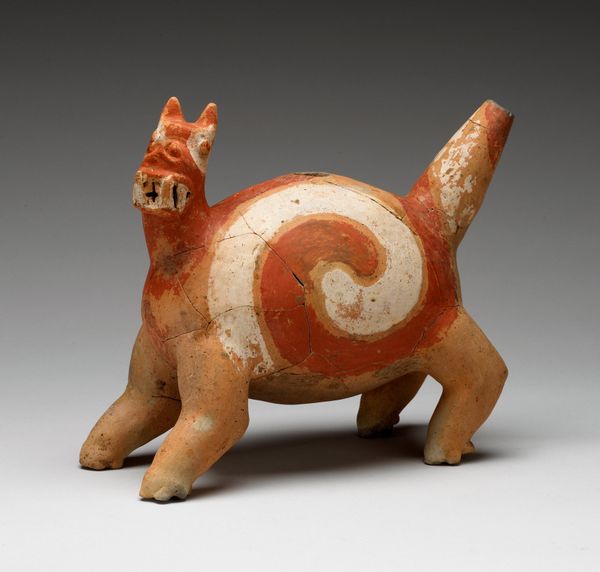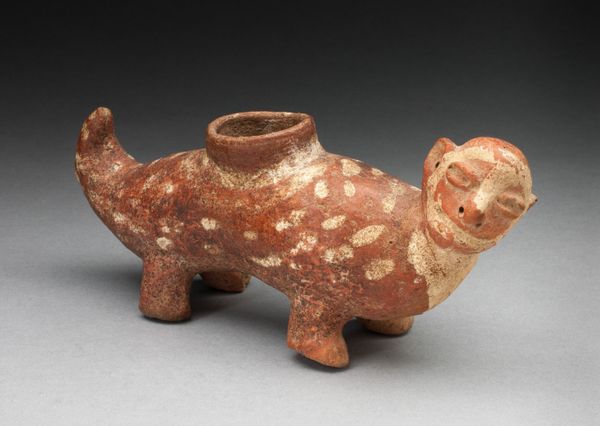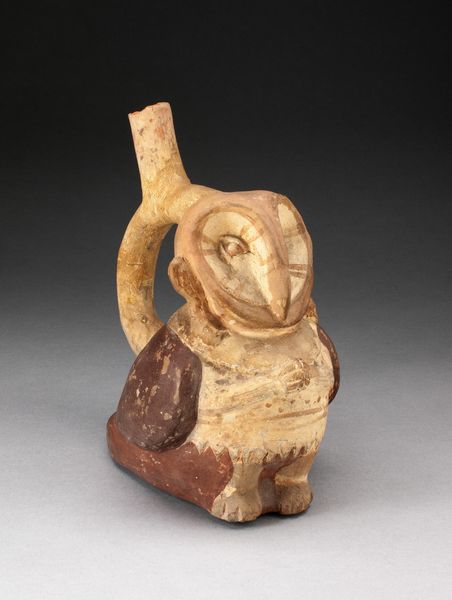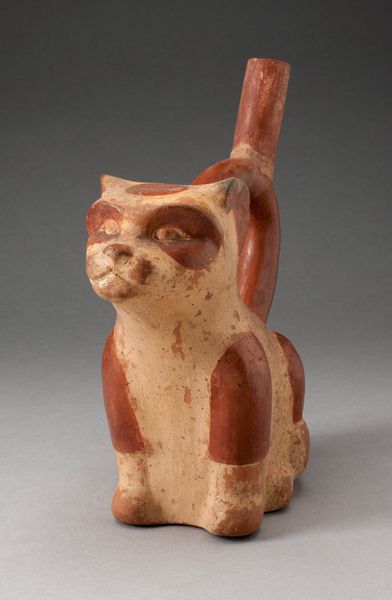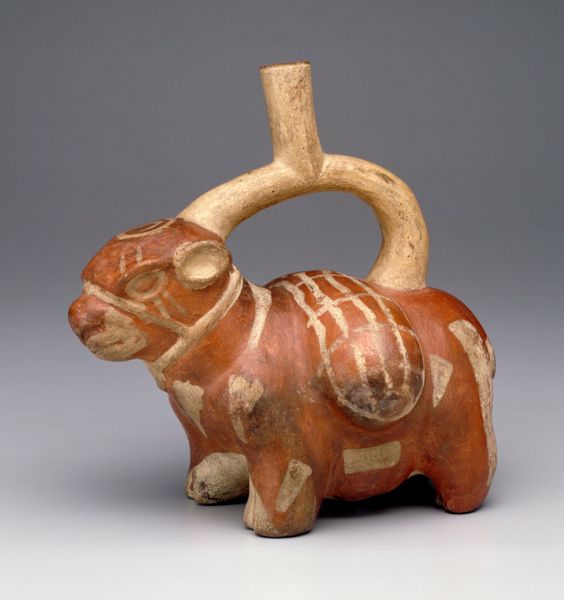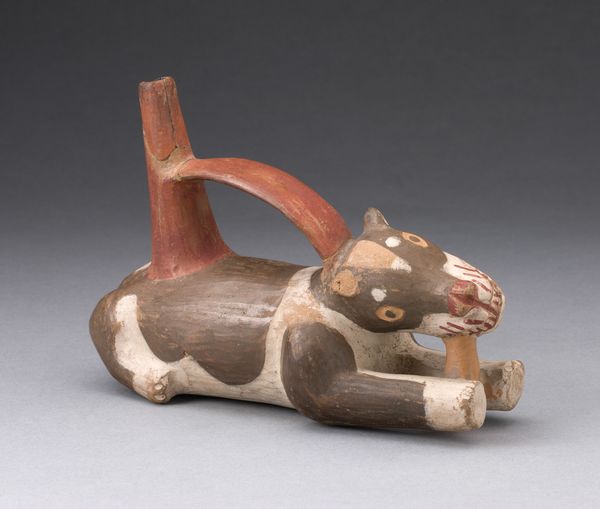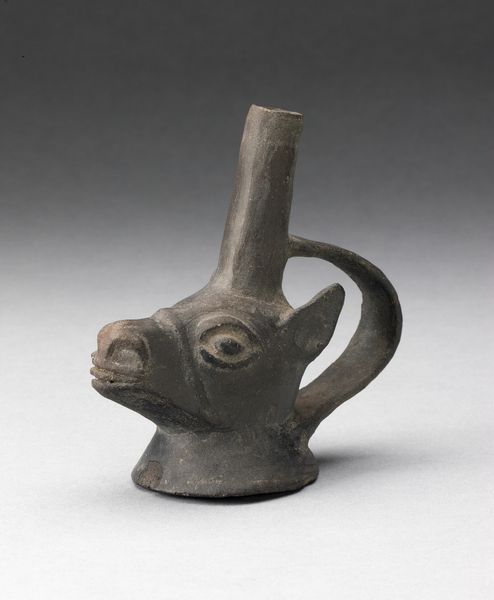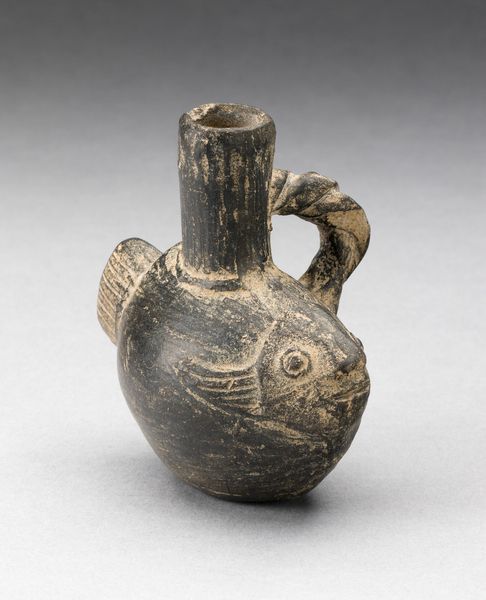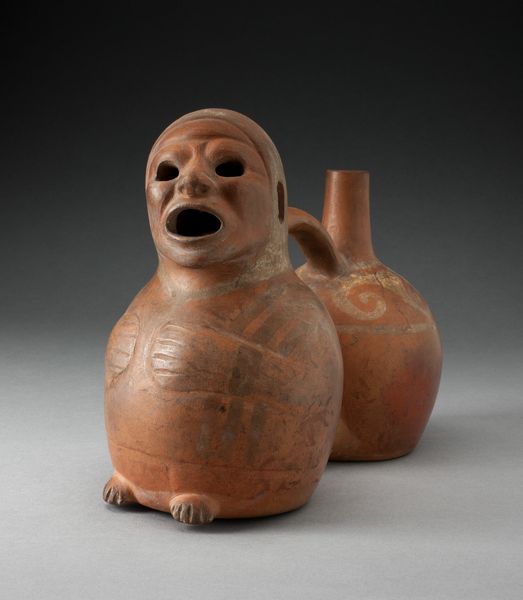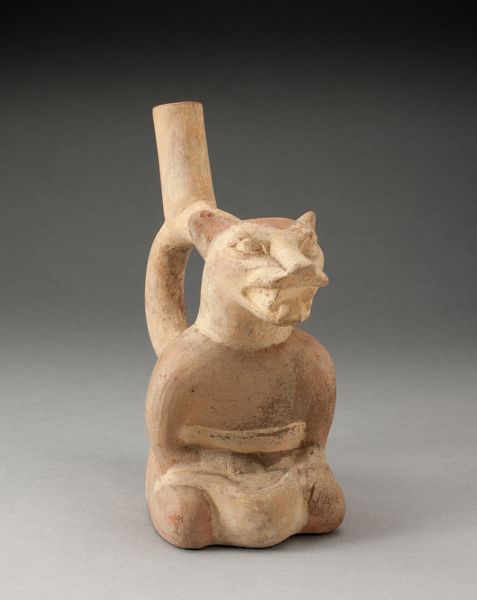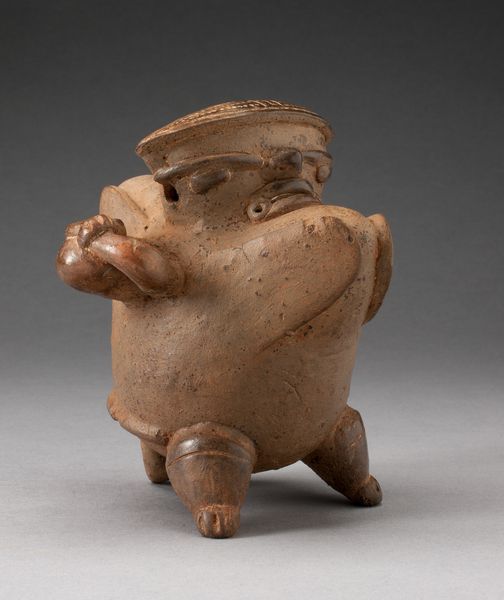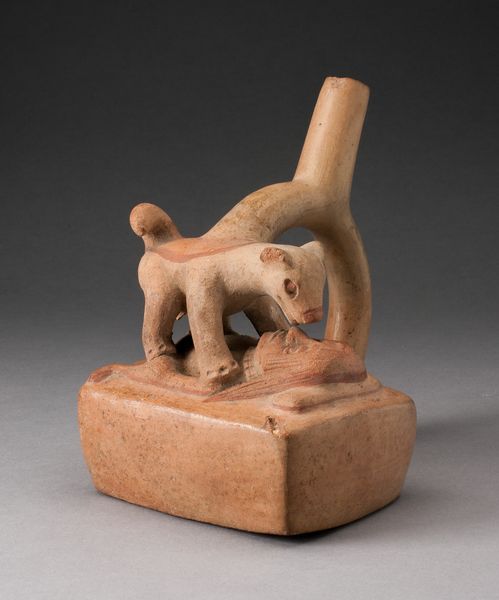
Handle Spout Vessel in Form of an Owl Eating a Mouse c. 100 - 500
0:00
0:00
ceramic, terracotta
#
ceramic
#
figuration
#
terracotta
#
indigenous-americas
Dimensions: 19.4 × 18.7 cm (7 5/8 × 7 3/8 in.)
Copyright: Public Domain
Curator: Here we have an engaging piece from the Moche culture, titled "Handle Spout Vessel in Form of an Owl Eating a Mouse," dating from approximately 100 to 500 AD. Editor: My first impression is how unsettling yet fascinating it is. There’s something deeply unsettling about that owl calmly consuming its prey, immortalized in clay like this. Curator: Indeed. It's striking how this vessel speaks to the Moche’s worldview. The representation of animals, especially predators, was central to their cosmology, often reflecting power and ritual practices within their society. Consider the owl—a creature associated with the night and perceived as having otherworldly powers. Editor: And let's consider the craftsmanship! Working with ceramic in this way—molding a vessel that is both functional and so powerfully expressive—tells us a great deal about the material culture. The smoothing and burnishing of the clay would have been vital to its use, to keep liquids safely contained. The labor invested in creating the piece certainly elevates it beyond the merely utilitarian. Curator: Absolutely, the technical skill is remarkable. Beyond pure functionality, though, I think about the elites and rulers within Moche society who might have commissioned or even owned objects like these. Owning such a vessel could have served as a display of status. The imagery likely held a great significance within their political system as well. Editor: Right, but how accessible would this imagery have been to a broader public? Was its circulation limited? Understanding production and consumption patterns tells us volumes. Also, think of the trade and exchange networks that would have enabled it to travel. Curator: I agree, mapping trade routes and social reach is crucial for interpretation. What stays with me most is how this seemingly simple object provides insight into the spiritual beliefs of a complex civilization. Editor: For me, it’s about recognizing the owl not just as a symbol but as a testament to human ingenuity—shaping earthy materials into lasting forms of cultural expression.
Comments
No comments
Be the first to comment and join the conversation on the ultimate creative platform.
